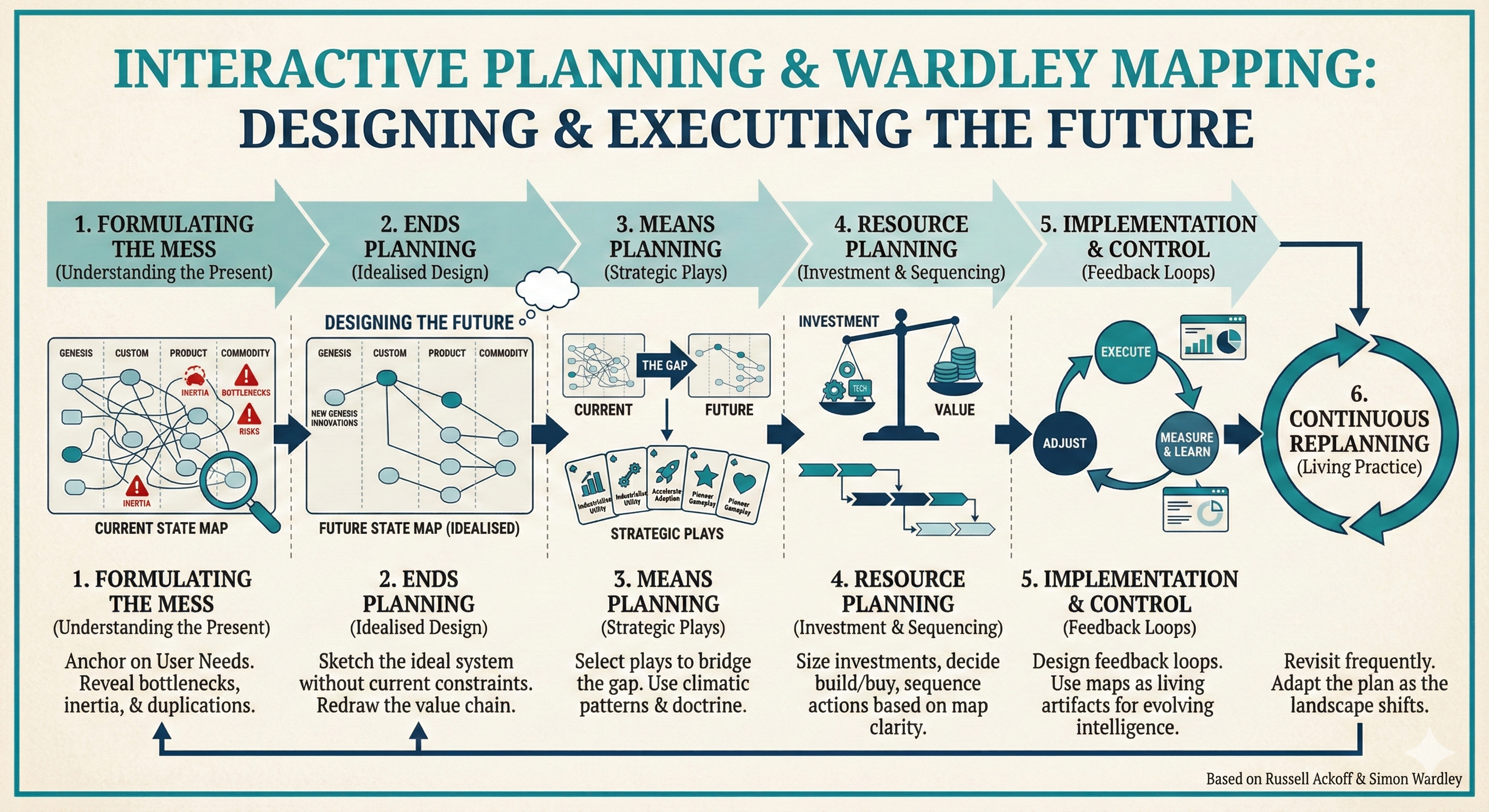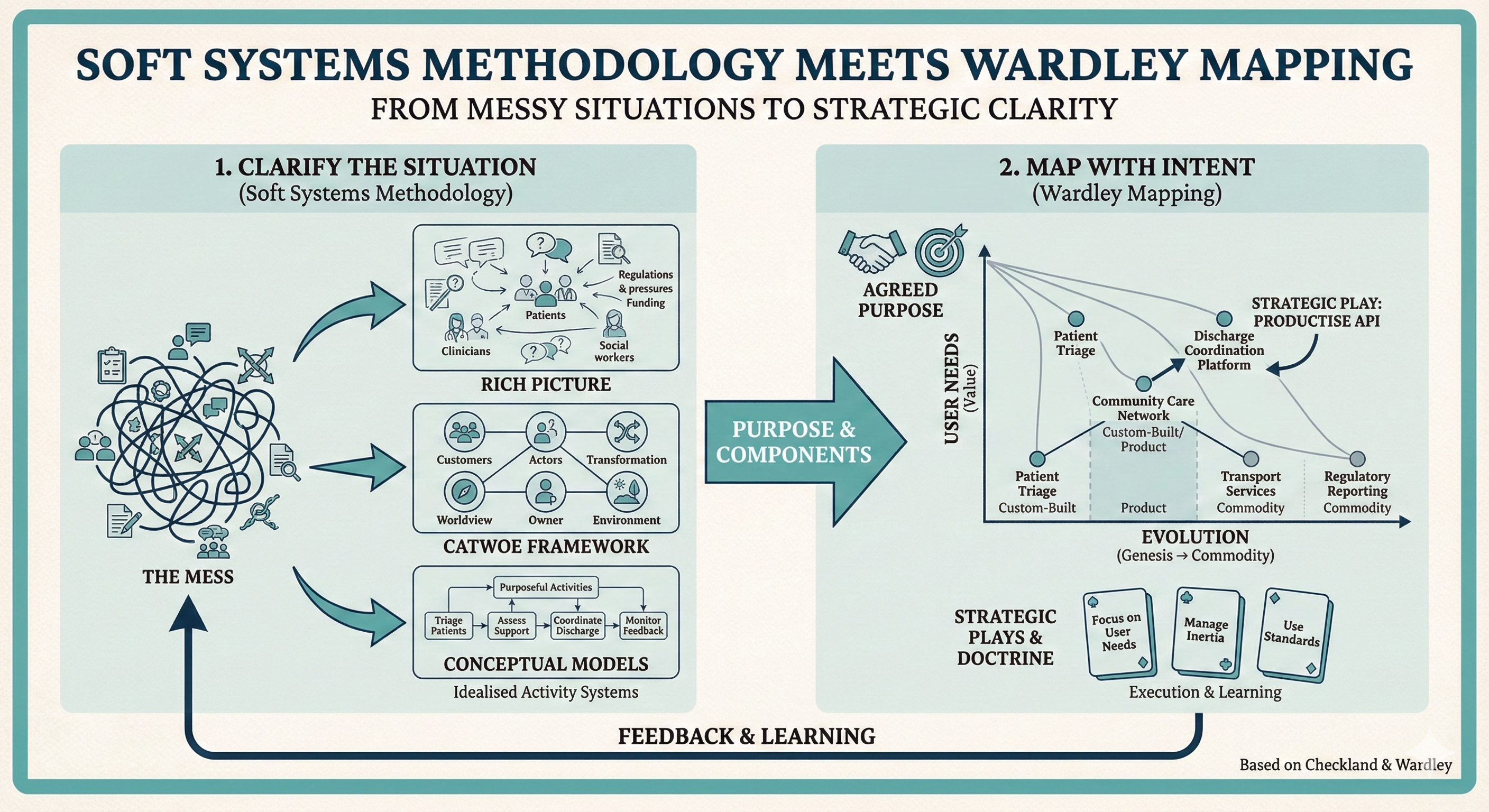Interactive Planning, Idealised Design, and Wardley Mapping
In our last post, we explored how Soft Systems Methodology can help us make sense of messy, contested situations. We saw how SSM allows us to negotiate a shared understanding of a problem space, creating a foundation for purposeful action. But how do we move from understanding the present to designing a better future?
Russell Ackoff's interactive planning and Wardley Mapping both ask leaders to design the future, not just forecast it. Together, they give teams the narrative, visual, and strategic tools to make that future a reality. Idealised design sketches the destination, while maps expose the terrain we must cross and the moves that will get us there.


